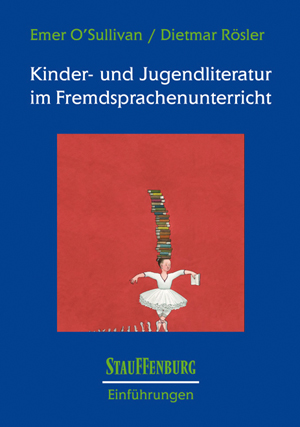Following are three Call for Papers for
Barnboken – Journal of Children’s Literature Research.
For information on any of them, please see
www.barnboken.net.
1. For the Spring 2014 issue: “You're Out of Control!” The Unruly Child in Children’s Literature
Unruly, wild and loud children are common in children’s literature. Indeed, there seems to be a need to portray children outside parental control, or even of children who rebel against oppressive adult regimes, as in Shockheaded Peter or Pippi Longstocking. One could argue that children’s and YA fiction establishes a zone of freedom where (fictional) children are allowed a measure of freedom. It is of course true that the unruly and anarchic child can be used as a warning, but more often than not the disobedient and troublesome child saves the day. Both Astrid Lindgren’s Emil and J. K. Rowling’s Harry Potter are rule-breakers who go their own ways, yet they ultimately bring about harmony and redemption.
The unruly child can be seen from different perspectives. Concepts that can open up the notion of the unruly child include: identity, power (not least between adult-child), normativity, body, performativity, animalism, and queer. Some of the questions that beg to be asked are: what is the role of the unruly child in children’s literature? What are the limits of “unruliness”? How close is the state of the wild child to that of animals? Thus, the wild, the loud and the unruly will be the Barnboken – Journal of Children’s Literature Research Spring theme 2014. We welcome proposals and articles in that spirit, and we do so up until:
23 September 2013 (proposals)
25 November 2013 (articles)
2. For the Autumn 2014 issue: Britt G. Hallqvist 100 Years
Britt G. Hallqvist (1914-1997) is one of the most important figures in Swedish children’s literature during the 20th C. Her contribution is at once deep and versatile. From the début with the comic masterpiece Rappen’s på Blåsopp [The Rappens of Blåsopp] in 1950, over numerous children’s and YA-books, several collections of poetry and verse, children’s drama, to children’s songs, hymns and prayers, her work is characterized by a both playful and exact attitude to language. Equally important was her role as a congenial translator of children’s literature. She translated Kipling’s The Jungle Books, Wilder’s The Little House on the Prairie, Milne’s Winnie-the-Pooh and Tolkien’s The Hobbit, to just mention a few. Finally, in her translations just as in her original work, she switched with perfect ease from pose to poetry as can be seen in her indispensable translations of nonsense poetry (Plath, Lear, Eliot, Krüss) into Swedish. Barnboken – Journal of Children’s Literature Research will devote the 2014 Autumn issue to Britt G. Hallqvist and her contribution to Swedish children’s literature. We welcome proposals and articles up until:
25 November 2013 (proposals)
1 April 2014 (articles)
3. For the Spring 2015 issue: The Institutions that Shape Children’s Literature: Schools, Publishers and Libraries
Children’s literature cannot be reduced to the book the reader holds in her hand. The act of reading comes at the end of a long chain of actions, all of which are prompted and supported by different literary, cultural, pedagogical institutions (schools, libraries) as well as by commercial interests (publishers, booksellers). Thus, to understand the conditions that shape children’s literature and children’s reading it is necessary to scrutinize children’s literature as a cultural field with its own infrastructure. Through which channels do children’s books reach the child reader? What is the role of publishers, libraries, reading campaigns, reviews of children’s books, literary prizes? Which discourses about children and childhood shape the institutions of children’s literature? What is the role of new technologies and media forms in creating new arenas for children’s literature? Which tools can children’s literature research bring to bear on the field of children’s literature and the cultural practices of reading? These are some of the questions that Barnboken – Journal of Children’s Literature Research will address in the 2015 Spring issue. We welcome proposals and articles on these and related topics up until:
12 August 2014 (proposals)
25 November 2014 (articles)
For more information, please see
www.barnboken.net.
Åsa Warnqvist, editor
Swedish Institute for Children’s Books
Odengatan 61
SE-113 22 Stockholm
SWEDEN
Tel:
+ 46 8 54 54 20 51. E-mail:
barnboken@sbi.kb.se 




